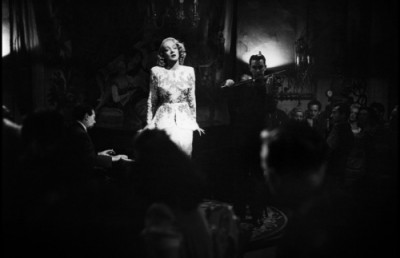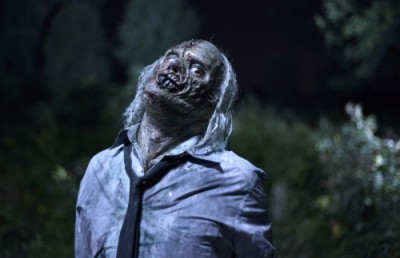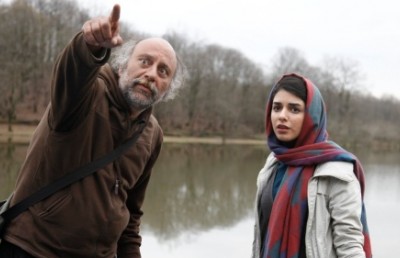Matteo Garrone, Yorgos Lanthimos and Denis Villeneuve’s latest features presented in Official Competition at the 68th Cannes Film Festival
A report on the projection of three contrasting worlds

Il racconto dei racconti (Tale of Tales) by Matteo Garrone.
2014. Italy. Color. 125 min.
Official Selection, 68th Cannes Film Festival, 2015.
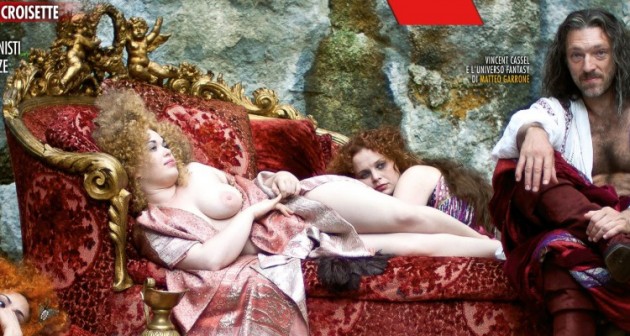
Some fairy tales portray Kings and Queens, Princes and Princesses whose tragi-comic adventures always have a joyful ending. Such is the enchanting and somewhat innocent world invented by the American cartoonist Walt Disney (1910-1966). Others seem less suited for kids due to their depiction of the violence that constantly threatens the kingdoms, and of the cruelty that inhabit the mind of those that rule them. Such is the lugubrious and uncanny world imagined by the German Brothers, Jacob Grimm (1785-1863) and Wilhelm Grimm (1786-1859). Older fairy tales, moreover, condemn the sins of monarchs who have to engage in a battle of good against evil before living happily ever after. Such is the moralist and didactic world of Charles Perrault (1628-1703).
The first fairy tales ever written, however, unveil in the same manner: the pride, the wrath and the lust of men and women of royal descent, as well as the consequences those deadly sins have on their entourage. Dissimulated in the collective unconscious derived from mythology, they address more directly taboos such as honour crimes, incestuous jealousy and inter-generational love. Such is the merciful and fantastic world of Giambatista Basile (1566-1632), the one that inspired Matteo Garrone for his film Il racconto dei racconti (Tale of Tales), where forced marriage, infanticide as well as self-mutilation, still resonate today as terrible realities.
Between 1634 and 1636, a series of fairy tales entitled Lo cunto de li cunti overo Lo trattenemiento de peccerille, later known as Pentamerone, is published under the anagrammatic name of Gian Alesio Abbattutis. These stories were practically ignored in Europe for over two hundred years, mostly because they were written in a Neapolitan dialect. Nonetheless, some of Basile’s most famous tales such as Cinderella, Sleeping Beauty and Snow White that can be found in the book under different titles, were adapted by the modern storytellers mentioned above. A first tale which initiates the telling of forty-nine other tales by ten storytellers over a period of five days, structures the Pentamerone. If such a mise-en-abîme narration inherited from the _Decameron by Giovanni Boccacio (1313-1375) and The Canterbury Tales by Geoffrey Chaucer (1340-1400) refers to the title of Garrone’s film, the director didn’t straightforwardly apply this structure in his film.
The scriptwriters of Il racconto dei racconti, namely Matteo Garrone, Edoardo Albinati, as well as Ugo Chiti and Massimo Gaudioso, 1 chose three of the ten fairy tales introduced in the first day of storytelling in Basile’s Pentamerone, that remain unidentified onscreen : Lo polene (The Flea), La cerva fatata (The Enchanted Doe) and La vecchia scorticata (The Old Woman Who Was Skinned). Garrone takes a lot of liberties with the original tales in his film adaptation, and thereby highlights his point of view on what he considers as “the story of three women of three different ages.” 2 The continuity of these stories’ respective narration is fragmented by a parallel editing, while the royal characters of the kingdoms of High-Hill, Long-Trellis and Strong-Cliff are united in the final scene of the film.
In Basile’s tale Lo polene, the Princess of High-Hill (Bebe Cave) is held captive by the ogre she had to marry until seven giants save her, whereas in Garrone’s film, she saves herself by slitting the throat of her husband. When she goes back to her repented father (Toby Jones), consequently, she is not a victimized princess whose hand is given to her savior, but a confident and fearless young woman who is crowned as a Queen to rule the Kingdom.
In La cerva fatata, the Queen of Long-Trellis (Salma Hayek) gives birth to twin brothers after eating the heart of a sea dragon. In Il racconto dei racconti, the two boys (Christian Lees and Jonah Lees) have separate mothers: the Queen, who eats the heart of a sea dragon, and the servant (Laura Pizzirani), who cooks it. When the possessive Queen attempts to separate the children by killing the unwanted one, two different outcomes are presented. At the happy ending of Basile’s story, the two brothers rule their own kingdom and make peace with their living mother whereas Garrone’s Queen, on the contrary, dies at the hands of her own son. This narrative choice on the part of the director, who emphasizes matricide over infanticide, underlines in turn the perils of excessive motherly love, which is associated in Garrone’s film as personal sacrifice.
The editors who published the English translations of the Pentamerone in the 19th and 20th centuries, such as John Edward Taylor in 1850, attenuated or simply censored La vecchia scorticata, for it was considered offensive and unfit for the general public. 3 In this tale, the King of Strong-Cliff (Vincent Cassel) is attracted by a female voice who happens to be the one of an old woman. Frightened by the sight he has of her in broad daylight following a night of pleasures, she is thrown out of the window where she meets a witch who transforms her into a fair lady. When the king asks this newly found beauty to marry him, her sister fetches a barber to skin her alive so that she too can be rejuvenated, a scene in Garrone’s film that is simply appalling. If Basile allows the newly crowned Queen to live happily ever after, the director reverses instead the charm of youth given to her. Garrone thus shows through the character of the one sister (Hayley Carmichael/ Stacy Martin) the inevitability of aging and denounces through the other sister (Shirley Henderson), how one is ready to suffer to be beautiful.
The shooting on location in Southern Italian medieval castles (Castel del Monte in Apulia, Castello di Donnafugata in Sicily and Castello di Roccascalegna in Abruzzo) and in their neighboring regions, offers a realistic picture of these otherwise fantastic stories. The contrasted yet at times overshadowed colors, the poignant soundtrack and the sumptuous art direction, make Il racconto dei racconti a ravishing film to watch, whereas bloody body parts add a gory quality to the film. The natural landscapes in which the characters appear lost or trapped, inspired the creation of sculptural depth of fields and controlled tracking shots. The close ups on the character’s face on the contrary, reveal their tormented souls or frightened state of mind. Il racconto dei racconti simultaneously portrays the grotesque and the sublime as well as the obscene and the innocent, or the monstrous and the beautiful. This is indeed the work of an accomplished director who masters the uncanny balance found in the coincidence of opposites.
The Lobster by Yorgos Lanthimos 2015.
Ireland, United Kingdom, Greece, France, Netherlands. Color. 118 minutes.
Official Selection, 68th Cannes Film Festival, 2015. Winner of the Jury Prize.
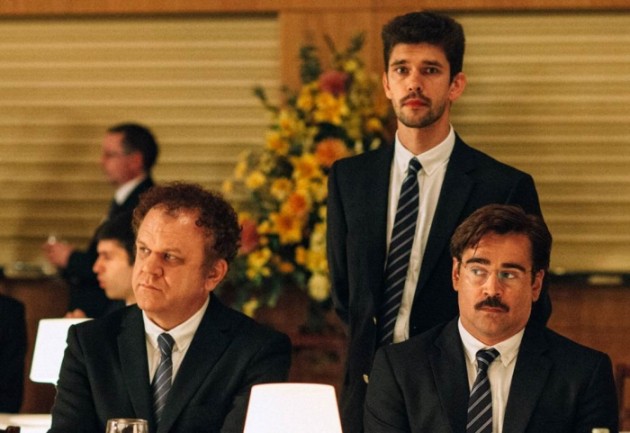
There are three kinds of people in The Lobster : singles, couples and those in between. Accordingly, each of them have their own separate habitat, lifestyle and sets of rules. Those who are involved in a relationship live in the city, where they work and raise children. The “Loners” choose to be single and are confined to the wilderness of the forest, where people dance alone and sexual intercourse is forbidden. As for the men and the women with no specific status, they are sent to a special institution where they have not only the opportunity, but the obligation to find a partner. Those who fail to receive or accept a marriage proposal following a probationary period of 45 days that involves educational, evaluative and hunting sessions, are threatened to be turned into an animal of their own choosing. In the world imagined by the Greek director Yorgos Lanthimos where love is facing extinction, it is illegal and lethal to be single.
The Lobster is the second film presented in Cannes for the Palme d’Or competition and many critics who attended the screening considered it as the UFO of the Festival. The emotionless expression of the actors that can be described as Bressonian; the gratuitous demonstration of violence and the use of crude language we thought we were desensitized from, as well as the frigidity of the sexual encounters forced upon the residents of the retreat, make the audience’s usual identification with the characters difficult. The film’s impassive tone is furthermore emphasized by the virtual absence of inflection in the voice-over narration and the two single notes included in the soundtrack, that constantly, not to say randomly, punctuate it.
What caught everybody off guard in Cannes is that nobody really knew what the film was about. Thinking about the social pressure associated with being in a relationship and the possible threat those who enjoy being single poses to the normative conventions, might help us understand it better. The opposition between partnership and celibacy or between the city and the woodland, are remainders of the anthropological or positivist divide between civilization and savagery. This is probably why the ones who are caught in the middle are treated as potential outcasts, forced into a highly structured and punitive societal rehabilitation.
The guests who are confined in the institution are treated like anonymous prisoners. As a matter of fact, no one in the film except David has a proper name but is instead referred to as “Loner Leader,” the “Short Sighted Woman” or the “Limping Man.” Depriving the people onscreen of such personal identity enhances the distance between the characters and the viewer, who has to rely on the profile they created to identify themselves. Individuality is thus determined by physical resemblances, common traits, general preferences and similar behaviors that are crossed-referenced to compute a potentially successful relationship. Love and hate are mediated if not monitored, the vocal expression of personal thoughts and feelings are often repressed, while sex and violence are crudely and passionlessly demonstrated.
Far from being awkwardly added to this film, the themes and formal strategies identified above echo the ones we find in the director’s previous features, initiated with the collaboration of his long-time accomplice and co-scriptwriter, Efthymis Filippou. We consequently recall the personal and the collective alienation portrayed in Alps 4 and in Dogtooth 5 , in which the actors’ performances are as stoic as the camera fixated onto them. The main distinctions between The Lobster, Alps and Dogtooth, and most probably consequential of the internalization of Lanthimos’ career, are the spoken language and the multiculturalism of the film’s cast. The presence of Colin Farrell, Rachel Weisz, Angeliki Papoulia and Léa Sédoux, is thus representative of the unique reputation the director acquired over the years and of the countries associated in this coproduction. English as opposed to Greek becomes the main spoken language in the film. If French dialogues is interspersed, it is mainly to reinforce the secrecy of the relationship between the Maid and the Loner Leader, who team up to sabotage the structure of the repressive social system they live in.
Yorgos Lanthimos challenges the conventions of cinema such as film acting and film sound. Rarely do we find movie stars taking the risk of stepping away from mainstream narratives and established methods of interpretation to improvise on the set or work closely with non-professional actors. Equally uncommon is the de-contextualization of genre music added to scenes that have little or nothing to do with the mood that specific soundtracks are usually meant to accentuate —such as classical music for instance. Nonetheless, The Lobster was granted the jury prize in Cannes even though (or because) it perplexed audiences so much. Perhaps one of the reasons why the film appeared alien to many viewers, is because it shows the basic instincts of men and women who strive to survive in a cloistered environment, where everybody seems to have forgotten about the way love feels and is expressed. If such a bestial world seems absurd, isn’t it because we are not yet ready to admit that it may pose a threat to the human condition?
Sicario by Denis Villeneuve
2015. United States. Color. 121 min.
Official Selection, 68th Cannes Film Festival, 2015.
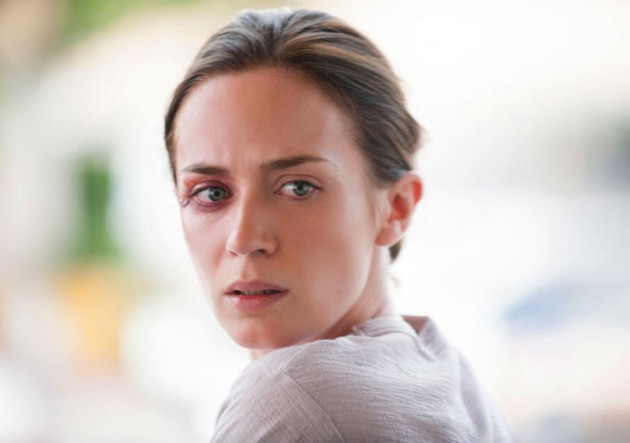
At the beginning of Sicario, which take place sometime in the 1990’s, a tactical team of FBI agents discover dozens of corpses hidden in the walls of abandoned houses near El Paso, USA. Following the death of colleagues on site, special agent Kate Macer (Emily Blunt) accepts to be part of a secret operation targeting the presumed assassins: the members of a deadly drug cartel who happen to be located in Ciudad Juarez, Mexico. Most of the strategic aspects of the mission remain classified and hidden from her, including the identity of two key figures in this joint task force: an original US government official who commands the squad name Matt Graver (Josh Brolin), and a shadowy man from Colombia called Alejandro (Benicio Del Toro). If Alejandro is the key to the Pandora’s Box Macer is about to open, the actual role each of them had to play in this operation is only revealed to her at the end of the film.
For the director Denis Villeneuve, Sicario asks a lot of questions but leaves most of them unresolved. 6 The main question being raised is: why is a Colombian sent on a mission with two Americans in Mexico? Such a question prompts in return many others that the film subtlety refers too. Why is the United States involved in a secret war against drug cartels outside of their borders? How and where do these cartels operate? Who works for them and who fights against them? Since when and why? As the narrative evolves, it reveals an undercover reality that is as complex as it is frightening.
On December 1st, 1999, the newspaper The Independent reports that over one 100 corpses were being exhumed from two mass graves located in a Mexican ranch near the American border. Five Hundred hooded Mexican soldiers were securing the location while some 200 FBI officials worked on the site, keeping the search secret from the local police: “he US Drug Enforcement Agency (DEA) believes they have found a repository for the bodies of suspected informers killed by the notorious Juarez cartel on both sides of the violent frontier between El Paso and Ciudad Juarez.” 7 In a declaration that supports the joint effort in the battle against the Mexican drug cartels, President Bill Clinton declared : “We had a lot of success a few year ago in taking down a number of the Columbian drug cartels, and one of the adverse consequences was that a lot of the operations were moved north into Mexico.” Based on that statement, one may think that the consecutive dismantling of cartels, first in Colombia then in Mexico, will put an end to drug trafficking. Nothing could be less certain.
According to the newspaper Le Monde, the Juarez cartel controls one of the main routes between the United States and Mexico which paves the way to a drug market evaluated at many billions dollars annually. The American State Department’s Report on the corruption in Mexico, 8 furthermore, claims that the level of violence in the province of Chihuahua has reached unprecedented peaks while the number of reported disappearances and brutal murders keep rising. 9 Apart from the disappearance and/or killing of countless men associated with the cartels’ activities, Ciudad Juarez is infamously known for the unresolved crimes involving the kidnapping, rape, mutilation, and assassination of hundreds of young women whose corpses are dumped in the desert. The mystery surrounding a string of 200 such murders between 1993 and 2000 in Ciudad Juarez remains unresolved, as the contemptuous government officials portray the matter as insignificant. Unfortunately, these mass killings are similarly discarded in Villeneuve’s film where a few posters of missing girls are put on the walls of a building, like a simple prop used in the background of the location to convey Juarez’ general violent ambiance.
Prior to writing the script for the film, actor Taylor Sheridan conducted a field study in the zones where the Mexican cartels operate. His research unveiled the intricacies of this illicit trafficking in a place that fears neither God nor Men, and where the war on drugs is in fact never ending. In this wild south-western world represented in Sicario, governments, law enforcers and local authorities all seem to be consumed by corruption. Introducing a female agent as main character in this otherwise male dominated film cast, was considered courageous on the part of the scriptwriter and director. Indeed, the depravation of the righteous morals and the exploitation of the sex appeal of a female character are usually mutually exclusive in Hollywood where her redemption, as opposed to her downfall, is usually the norm. In this respect, the way the film challenges women’s stereotypes within America’s most powerful institutions, which work for the so-called security of the nation, is indeed noteworthy.
Following the success of Prisoner and Enemy, Villeneuve confirms his growing interest for suspense and action film genre with this new Hollywood opus that will certainly attract large audiences upon its release. The 32 million dollar budget allocated to the production of Sicario certainly opened a wide range of creative possibilities and formal strategies to the Trois-Rivière born director, to which he had limited or no access to before his American career was on the rise. Smooth aerial long takes offer clear bird’s eye views on what appears to be the deserted Mexican land of Ciudad Juarez, even though the film was shot in Albuquerque, New Mexico. Repeated use of artifice such as explosions and guns firing, car races and crashes, as well as unexpected physical and verbal tensions between the characters, contribute to the fast pace of the film.
Along with the famous and often awarded director of photography, Roger Deakins, who worked with him on Prisoner and participated on the production of Blade Runner, Villeneuve had the privilege to direct an A list cast including Golden Globe winner Emily Blunt, Academy award winner Benicio Del Toro and Academy award nominee Josh Brolin. As we impatiently await the completion of the director’s next project, Sicario deserves our attention if only because the cruel reality it portrays, is concomitant to what the Canadian diplomat Peter Dale Scott refers to as “deep politics.” 10
Notes
- Ugo Chiti and Massimo Gaudioso both collaborated with Matteo Garrone on the scripts of his recent films, Gomorra (2008) and Reality (2012). ↩
- Anderson, Ariston. 2015. “Cannes 2015: Five Questions for Tale of Tales Director Matteo Garrone”. In Filmmaker. Online: http://filmmakermagazine.com/94301-cannes-2015-five-questions-for-tale-of-tales-director-matteo-garrone/#.VYhywL21YdU. ↩
- Basile, Giambatista and John Edward Taylor, J. E. 1848. The Pentameron or the Story of Stories, fun for the little ones. 1st ed. London: D. Bogue, p. xiv-xv. ↩
- Alps won the Osella for Best Screenplay at the Venice Film Festival in 2011. ↩
- Dogtooth was the winner of the first prize in the “Un certain regard” competition and nominated for an Oscar in the “Best foreign language film” category in 2009. ↩
- Villeneuve, Denis. 2015. “68th Cannes film festival. Sicario’s press conference”. In Festival de Cannes. Online: http://www.festival-cannes.com/fr/mediaPlayer/15256.html. ↩
- McGirk , Jan. 1999. “Mass graves of more than 100 victims of drug cartel found near Mexican border”. The Independent, (December 1st). ↩
- Le Monde. 2014. “Au Mexique, Le chef du cartel de Juarez tombe à son tour.” In Le Monde (November 10th). Online: http://www.lemonde.fr/ameriques/article/2014/10/10/mexique-arrestation-du-chef-du-cartel-de-juarez_4503937_3222.html. ↩
- American State Department. 2001. “State Department Report on the Corruption in Mexico.” In U.S. Department of State. Online: http://www.state.gov/j/drl/rls/hrrpt/2001/wha/8320.html. ↩
- Scott, Peter Dale. 2003. Drugs, oil, and war : the United States in Afghanistan, Colombia, and Indochina. Lanham : Rowman & Littlefield. Scott, Peter Dale. 2014. American War Machine. Deep Politics, the CIA Global Drug Connection, and the Road to Afghanistan. Lanham : Rowman & Littlefield. ↩



